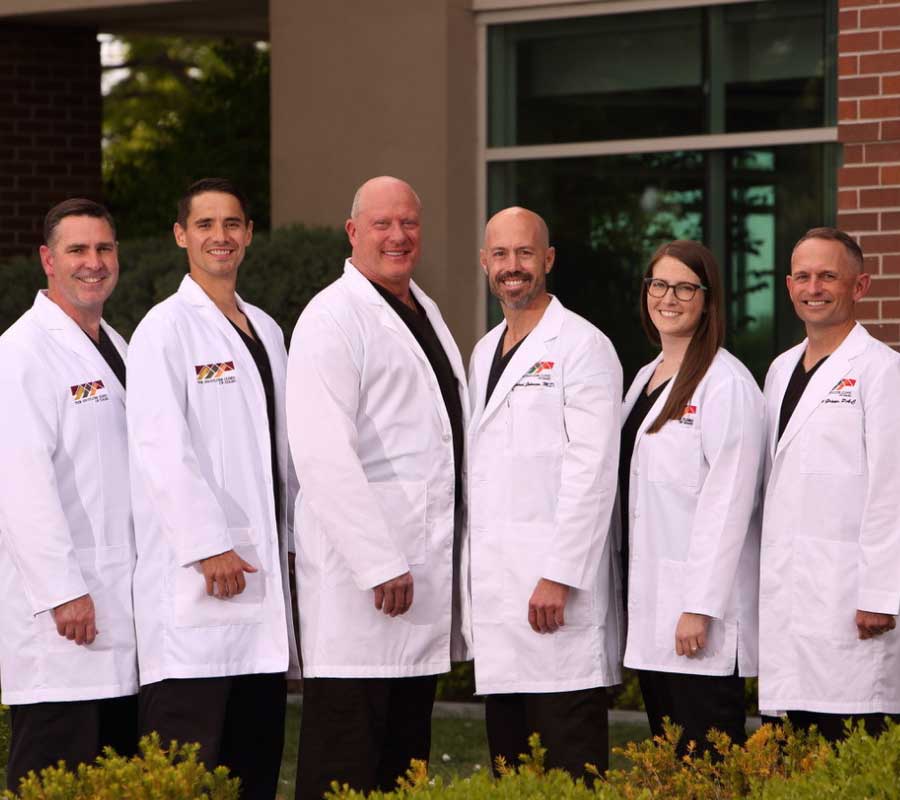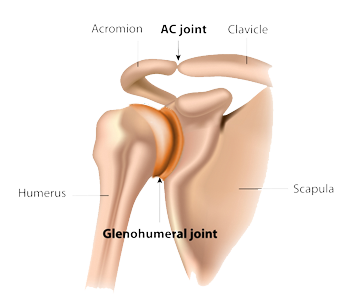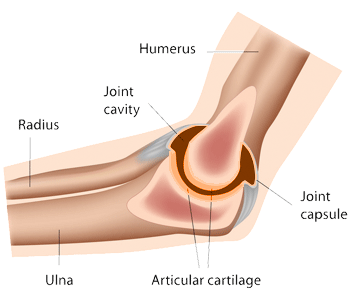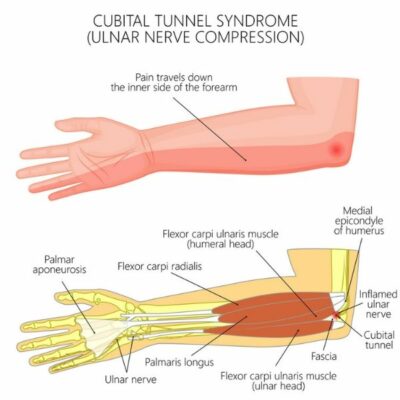Ulnar Nerve Release Surgeons

Are you experiencing ulnar nerve compression? If so, you may be a candidate for and ulnar nerve release and ulnar nerve decompression. The ulnar nerve release surgeons at Shoulder Clinic of Idaho provide diagnosis and both surgical and nonsurgical treatment options for patients in Boise who are suffering from nerve compression. Contact the Shoulder Clinic of Idaho team today!
What is Ulnar Nerve Release?
Ulnar nerve release, also called cubital tunnel release surgery is used to correct ulnar nerve compression (cubital tunnel syndrome). Ulnar nerve entrapment (also known as cubital tunnel syndrome or ulnar nerve compression) is a condition caused by compression of the ulnar nerve in an area of the elbow called the cubital tunnel. The cubital tunnel is a narrow passageway on the inside of the elbow surrounded by bone, muscle, fascia, and ligaments, with the ulnar nerve passing through the center. The ulnar nerve is responsible for the “funny bone” sensation felt by patients when the elbow is hit or bumped.
If the ulnar nerve becomes damaged or entrapped due to the inflammation or injury of the surrounding soft tissues, ulnar nerve release surgery can be performed helping the nerve recover and prevent further damage. The orthopedic specialists at The Shoulder Clinic of Idaho, serving patients from Boise, Meridian, Nampa, and the surrounding communities of the Treasure Valley have extensive experience with the specialized surgical procedures of ulnar nerve release and ulnar nerve decompression.
What is the goal of ulnar nerve decompression?
The goal of ulnar nerve release and ulnar nerve decompression is to reduce the pressure on the ulnar nerve by providing more space for the nerve to move freely and to increase blood flow to promote healing of the ulnar nerve. Ulnar nerve surgery is used to explore the nerve in the region of the elbow and remove any compressive forces causing dysfunction of the nerve. There are many sites of ulnar nerve compression that need to be evaluated; however, three sites within the elbow are most common. The ulnar nerve is most commonly compressed in the bony groove in the elbow adjacent to the bump on the inside of the elbow called the medial epicondyle. This is where the ulnar nerve passes. The triceps muscle in the upper arm and its surrounding attachments (fascia) as well as the flexor muscles of the forearm may also contribute to compression of the nerve and must be carefully evaluated. Ulnar nerve decompression is commonly done through a minimally invasive approach depending on the severity of symptoms and compressive forces.
How is ulnar nerve release performed?
There are different surgical procedures that will relieve pressure on the ulnar nerve at the elbow. The orthopedic specialists at The Shoulder Clinic of Idaho can discuss which procedure would be best for the type of ulnar nerve entrapment experienced. Age, type of compression, area of entrapment, patient health, and the presence of muscle wasting or nerve damage all play a role in deciding which ulnar nerve release and ulnar nerve decompression surgery to perform. Ulnar nerve release and ulnar nerve decompression can involve the following:
Cubital tunnel release: The cubital tunnel is the space in the elbow through which the ulnar nerve travels. In this operation, the fascial bands and “roof” of the cubital tunnel are divided to allow more space for the nerve to travel. The careful division of the roof of the cubital tunnel increases the size of the tunnel and decreases pressure on the nerve. After the procedure, the roof of the cubital tunnel begins to heal and new tissue will grow across the division. The new growth heals the tissue overlying the nerve, allowing more space for the ulnar nerve to travel. This type ulnar nerve decompression works best when the compression is mild or moderate and when the nerve remains stable (e.g. does not slide out from behind the medial epicondyle when the elbow is bent).
Ulnar nerve transposition: In some cases, the nerve is moved from its place behind the medial epicondyle to a new place in front of it. Moving the nerve to the front of the bony ridge or bump on the inside of the elbow prevents it from getting caught on the bone and stretching when bending the elbow. When the nerve is moved, it will lie under the tissue anterior to the bump (medial epicondyle). In this position the nerve can be placed on top of the muscle (called, subcutaneous transposition) or beneath the muscle (called submuscular transposition). The orthopedic specialists at The Shoulder Clinic of Idaho can discuss which surgery is the best surgery for your particular condition.
Medial epicondylectomy: This procedure for ulnar nerve release and ulnar nerve decompression removes part of the medial epicondyle. Similar to the ulnar nerve transposition, this procedure prevents the nerve from getting caught on the bony ridge of the elbow when bent. It is rare for this procedure to be required.
Is ulnar nerve release and ulnar nerve decompression successful?
The results of ulnar nerve release are excellent for patients in Boise, Meridian, Nampa, and the surrounding communities of the Treasure Valley for routine cases of nerve compression. The ulnar nerve may take time to heal and may recover slowly in chronic cases or in cases where medical conditions such as diabetes or peripheral neuropathy are contributing to the disease process. In some instances, it may take several months to assess how well the nerve has done after the procedure. If the nerve is badly damaged, or if there is muscle wasting, there is a chance the nerve may not return to normal and some symptoms can remain after surgery. In these cases the surgery is still very beneficial as it prevents further damage to the nerve from occurring. It’s important to see the orthopedic specialists at The Shoulder Clinic of Idaho promptly if an ulnar nerve entrapment is suspected.
To obtain more information about ulnar nerve release and ulnar nerve decompression, and to find the best possible solution to elbow pain, please contact the orthopedic elbow specialists at The Shoulder Clinic of Idaho, serving patients in Boise, Meridian, Nampa, and the surrounding communities of the Treasure Valley.



